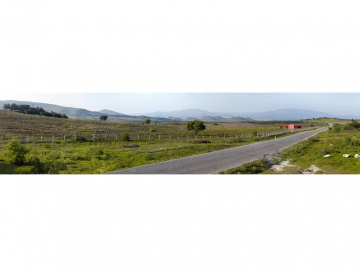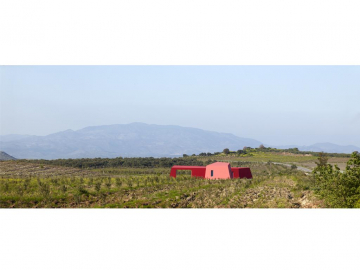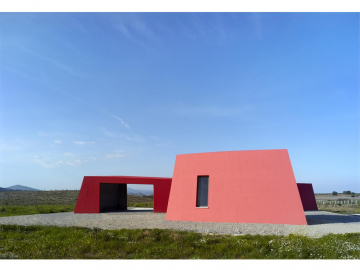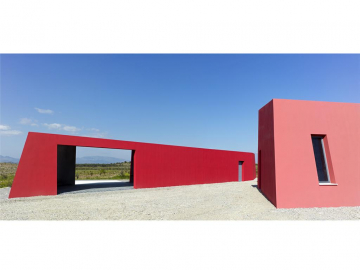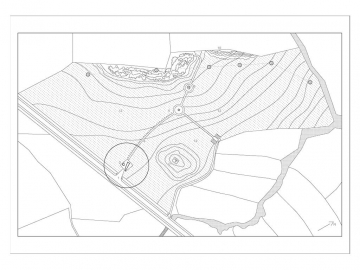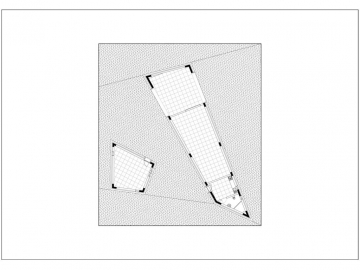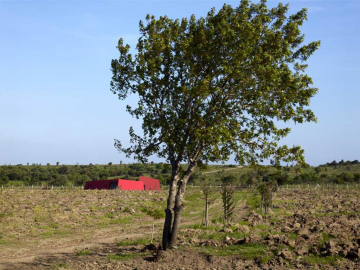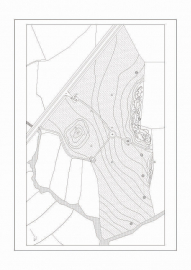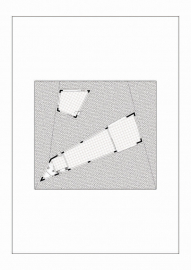Farm Buildings in Çandarli
The two lovers or maybe the friends form the entrance gate to the big olive plantation which is situated in between Dikili and Candarli,two townships in the northern Eagean coast of Turkey.The buildings placed upon a platform are composed of a cottage,bathroom and kitchen for the caretaker and a depot for the farming utensils,and oliveoil as well as a tractor garage,forming a patio for farm work.The roof and the periphery walls together form the five facades to the buildings.The buildings enhancing app. 150 m2 are placed in the 250.000 m2 olive grove.
Essay by Gokhan Karakus
The vernacular architecture of Anatolia in Turkey is the one of the oldest and most vital traditions of this ancient geography.The ravages of urbanization and the misuse of reinforced concrete have inflicted damage onto these traditional building techniques in stone,timber and mud until the point today where most of these vernacular architectures have lost their efficacy.While many villages retain older stock,all new buildings are made in ill defined applications of reinforced concrete and brick that hold only limited connections to the rationale behind the vernacular.It is in this transformative period that the architect Sevki Pekin has made radical move away from the form of the Anatolian vernacular towards the possibilities of new rural architecture for this west geography in his farmhouse buildings located in the northern Aegean region of western Anatolia.
The 2 rudimentary buildings are set in a flat plain at the entrance of an olive grove providing basic facilities for the farm.Each of the 2 buildings made of up of 5 sided prisms are basic and rudimentary serving their function in an anonymous way.Possessing no dinstinction between roof and wall the buildings are amorphous and strange additions to the rural landscape.The architect has chosen to ignore the local buildings techniques and metarials because in fact these systems have largely lost their meaning.Local builders are equally and perhaps more adept with the newer materials then in the older traditions.
It is here in the union of the two,of tradition and modernity,that the Farm Houses architecture strategy takes shape.In the tabula rasa landscape of the olive fields of the north Aegean,the buildings are forward looking harbingers of new possibilites of handcraft with industrial materials.Each building is a different version of this strategy taking place un the stage provided by a concrete platform.To make the strategy even more obvious the buildings have been painted a bright pink and red to declare forcfully their forward and progressive strategies.While it is not possible to bring back the past, in the Farm Houses by Sevki Pekin we see the importance of optimizing what we have at hand in forming a modern present.

